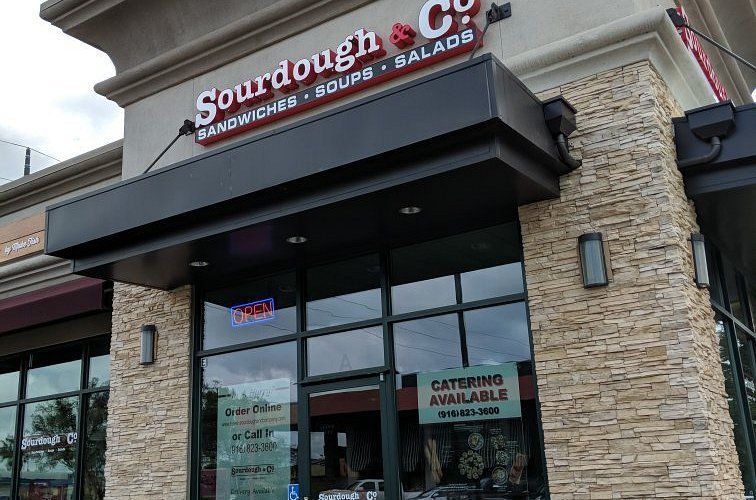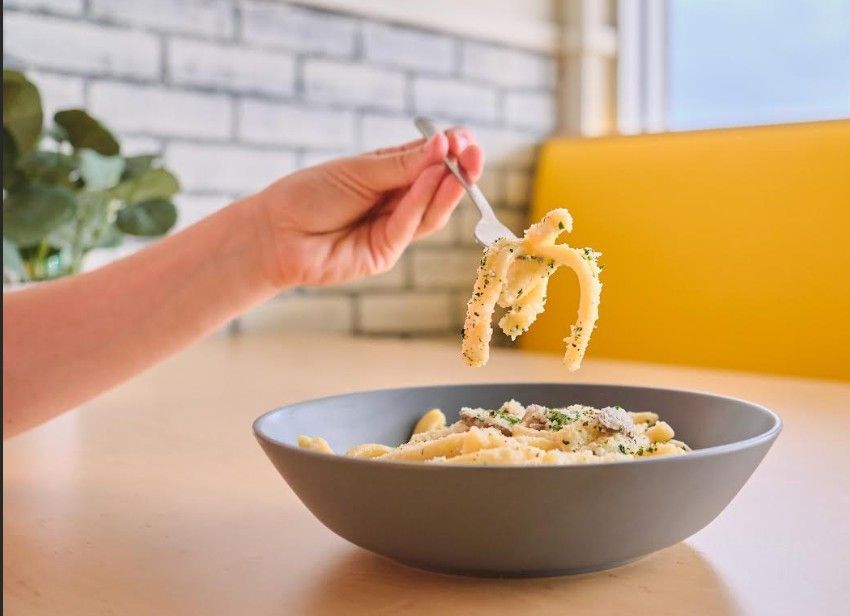Devan Middlebush
March 1, 2024

Devan Middlebush
All Dry Services
Onboarding Specialist
Devan is a young mom who creates a great work/life balance. She provides training and education on the franchisor side with new owners to make sure they have everything completed for a successful launch and is available after launch for any support needed.

Since its inception in June 2023, the Bet on a Vet 100 program has been dedicated to empowering veterans through franchise ownership. Spearheaded by the Veterans Franchise Council (VFC), this initiative is steadily transforming the lives of American heroes, and today, it marks a significant milestone: $500,000 donated to veterans in just over a year. With an ambitious goal of reaching $1 million in total support, the program is gaining remarkable momentum. A Powerful Milestone: $500K and Climbing The Veterans Franchise Council launched the Bet on a Vet 100 program with a bold objective—to provide 100 veterans with up to $10,000 in seed money to support their franchise ownership dreams. Now, having reached the halfway point of its $1 million goal, the program stands as a testament to the power of community-driven support and the determination of veterans eager to step into entrepreneurship. This $500,000 achievement represents real people—veterans who are now proud franchise owners across a range of industries. From home services and fitness to healthcare and technology, these veterans are transforming their lives and communities through business ownership. Spotlighting Veteran Success Stories To further inspire and celebrate these brave entrepreneurs, The Franchise Journal will now feature monthly updates highlighting these veterans' journeys. Each month, readers can look forward to learning about individuals who have taken advantage of the Bet on a Vet 100 program and the impact their franchises are having on local communities. These updates will include personal insights, challenges faced, and victories achieved by these veterans as they navigate their franchise ownership experience. By sharing these stories, The Franchise Journal aims to inspire more veterans to take advantage of this incredible opportunity. The Path to $1 Million: Building Momentum With $500,000 already awarded, the Bet on a Vet 100 initiative is accelerating its efforts to reach the $1 million goal. As more veterans explore franchising opportunities, the VFC continues to connect them with franchise brands that align with their skills, interests, and financial resources. The process is straightforward: Veterans start by completing a short questionnaire to assess their business interests, financial position, and goals. A VFC consultant then works closely with each veteran to identify franchise options that best match their needs. Once a veteran selects their ideal franchise and completes the necessary steps, they may receive up to $10,000 in seed money to support their investment. Why Veterans Excel in Franchising The success of the Bet on a Vet 100 program isn’t just about financial support; it’s about unlocking the potential that veterans naturally possess. Veterans bring discipline, leadership, and a mission-driven mindset—qualities that align perfectly with franchise systems. These traits enable veterans to excel in industries that require structure, teamwork, and strong customer service. Statistics back this up: veterans own one in seven franchises nationwide. The Bet on a Vet 100 initiative continues to reinforce this growing trend, providing the resources and support veterans need to become successful franchise owners. A Call to Action: Join the Mission As the Bet on a Vet 100 program powers forward toward its $1 million goal, veterans considering franchise ownership are encouraged to take advantage of this opportunity before funds run out. Likewise, franchisors interested in supporting veterans are invited to partner with the Veterans Franchise Council to expand the program’s reach. For those eager to learn more, schedule a 15-minute introductory call with Joe Griffith II or visit TheVeteransFranchiseCouncil.com for further details. By investing in those who have served our country, the Bet on a Vet 100 program is not only creating successful entrepreneurs—it’s building stronger communities and fostering lasting economic impact. With each dollar awarded, the program brings us closer to a future where America’s heroes thrive in business ownership. Stay tuned each month in The Franchise Journal as we continue to celebrate these inspiring veterans and track our mission to reach $1 million in total donations. About the Author Joe Griffith II's entrepreneurial and public service career has spanned almost 4 decades. From his service to our country in the US Air Force, his service as a Fire Lieutenant for the past 20+ years and as a lifelong entrepreneur and franchisee, Joe uses a Servant leader mentality to assist his client’s needs through active listening, conceptualization, foresight, innovation, and stewardship. He actively works with transitioning military veterans and First Responders. Contact Joe at jgriffith@thefranchiseconsultingcompany.com .

For entrepreneurs seeking a business that combines low investment, high quality of life, and minimal operational complexity, the EZ Learning Driving School franchise stands out as an appealing option. With a proven model that has been delivering quality driver education since 2005, this franchise offers a pathway to financial success without the burdens of high overhead or demanding technical requirements. Here’s why the EZ Learning Driving School franchise is an ideal venture for those looking to balance profitability with a fulfilling lifestyle. Low Investment: Affordable Entry into a Profitable Industry One of the most compelling aspects of the EZ Learning Driving School franchise is its affordability. With an initial investment ranging from $80,000 to $91,650, it ranks among the lower-cost franchise opportunities in the education and service sectors. This investment covers the franchise fee, basic equipment (like a small fleet of dual-control vehicles), and a modest 500-square-foot retail space—far less than the capital required for industries like food service or retail, which often demand large inventories or prime real estate. The financial appeal doesn’t stop at the entry point. According to franchise insights, EZ Learning boasts impressive unit economics, with average annual revenues of $650,000 and net profit margins around 50%. This translates to a potential net income of $325,000 per year—stellar returns for a business that keeps overhead low. Additional perks, like a $5,000 discount for veterans and first responders, further reduce the barrier to entry, making it accessible to a broader range of aspiring business owners. The driving school industry itself is evergreen, driven by a constant demand for driver education from teenagers, immigrants, and seniors needing refresher courses. Unlike trendy businesses that fluctuate with consumer whims, EZ Learning taps into a necessity—driving is a skill people need to live and work, ensuring a steady customer base with minimal marketing effort beyond local outreach. High Quality of Life: Flexibility and Community Impact Owning an EZ Learning Driving School franchise isn’t just about profit—it’s about crafting a lifestyle that prioritizes flexibility and purpose. Once established, the business requires minimal hands-on management. Franchisees benefit from a scalable model where instructors handle most day-to-day operations, leaving owners free to focus on growth or personal pursuits. This isn’t a 60-hour-a-week grind; it’s a business that, once running smoothly, allows for a balanced work-life dynamic. The quality-of-life benefits extend beyond time management. Running a driving school offers a sense of fulfillment that’s hard to replicate in other industries. You’re not just selling a product—you’re equipping people with a life skill, boosting their independence, and enhancing community safety. Whether it’s helping a teenager earn their first license, assisting an immigrant secure a job with newfound mobility, or supporting a senior maintain their freedom, the impact is tangible and rewarding. Franchisees also enjoy the backing of a seasoned support system. With over 25 years of experience, EZ Learning provides extensive training—both in-person and via daily Zoom sessions—along with creative marketing tools and a strong web presence. This support minimizes the stress of trial-and-error, letting owners focus on what matters: building relationships and growing their business. Low Bandwidth: Simplicity in Operations In an era where many franchises demand high-tech infrastructure or constant online oversight, EZ Learning stands out for its low-bandwidth requirements. You don’t need advanced IT skills or a robust internet connection to succeed. The business operates on a straightforward model: a small physical location, a few vehicles, and a team of well-trained instructors. Administrative tasks—like scheduling lessons or managing payments—are streamlined through basic software or even paper systems, keeping operations simple and cost-effective. The franchise’s digital needs are minimal but effective. A strong Google search presence and a basic website (provided as part of the franchise package) are sufficient to attract local customers. Marketing leans heavily on word-of-mouth referrals from satisfied students and partnerships with community hubs like religious institutions or schools—tactics that don’t require a heavy online investment. For franchisees in areas with limited internet reliability, this low-tech approach ensures the business remains viable without constant connectivity. Scalability is another advantage. Start with a single location and a handful of instructors, then expand as demand grows—all without needing to overhaul your operational framework. The franchise’s proprietary systems, honed over decades, guide you through this process, making growth feel organic rather than overwhelming. Why EZ Learning Stands Out Compared to other low-investment franchises, EZ Learning offers a rare blend of profitability and simplicity. Food franchises, for instance, often require $200,000+ in startup costs, complex supply chains, and high staff turnover. Retail ventures demand inventory management and prime locations, driving up expenses. In contrast, EZ Learning keeps it lean: a small space, a few cars, and a service people will always need. The franchise also outshines standalone driving schools. While “mom-and-pop” operations struggle with branding and visibility, EZ Learning provides a large territory with established Google rankings, giving franchisees a competitive edge from day one. Add in the comprehensive support—training, marketing materials, and a team that’s “propelling you to success”—and it’s clear why this model thrives. Getting Started: A Practical Path Forward Ready to dive in? Here’s how to launch your EZ Learning Driving School franchise: Initial Inquiry : Contact EZ Learning to discuss territory availability and financial qualifications (a credit score of 680+ and a debt-to-income ratio below 40% qualify you for third-party lending). Discovery Day : Attend a session in Winter Park, Florida, to explore the business firsthand (and maybe sneak in a Disney trip). Investment : Secure your $80,000-$91,650 investment, leveraging the veteran discount if applicable. Setup : Lease a 500-square-foot space, acquire 5-10 dual-control vehicles ($15,000-$30,000 each), and hire certified instructors. Launch : Use EZ Learning’s marketing tools to tap into local demand, aiming for 100 students monthly at $400 each—a realistic target yielding $40,000 in gross revenue. Diversify with defensive driving courses or advanced certifications to boost income further. A Smart Investment in Your Future The EZ Learning Driving School franchise is more than a business—it’s a gateway to financial independence and a rewarding lifestyle. With a low investment, high profit potential, and minimal operational complexity, it’s tailor-made for entrepreneurs who want to work smarter, not harder. In a world of high-stakes startups, this franchise proves you don’t need a fortune or a tech empire to succeed—just a smart plan and a passion for making a difference, one driver at a time. About the Author Michael Stavrinakis is an Award Winning & #2 Franchise Consultant for 2023 and 2024! Contact Michael to learn more about an EZ Learning Franchise Opportunity at Mstav@thefranchiseconsultingcompany.com .

In the bustling world of street food, there's a new player on the scene that's rapidly gaining attention and hungry fans: Pita Mania. What started as a single Greek street food trailer has now blossomed into a franchising sensation, captivating taste buds and hearts alike. At the heart of this culinary success story lies the remarkable journey of its founder, Harry Ari, whose path from escaping a communist regime to entrepreneurial triumph is nothing short of inspiring. Harry Ari's story begins with adversity, born into a world of political turmoil and oppression. Faced with limited opportunities and stifling conditions, he made a daring escape from his homeland at a tender age, seeking refuge and freedom in the land of opportunity: America. It was here that Ari found his footing and embarked on a journey of self-discovery and determination. With unwavering resolve and a hunger for success, Ari immersed himself in the vibrant tapestry of American culture, absorbing its entrepreneurial spirit and culinary diversity. Drawing from his Greek heritage and a passion for authentic street food, he envisioned a concept that would blend tradition with innovation, thus giving birth to Pita Mania. The concept was simple yet ingenious: mouthwatering pitas stuffed with savory fillings, bursting with flavor and freshness. From classic gyro and souvlaki to inventive twists like falafel and Mediterranean veggie, Pita Mania offered a tantalizing array of options to suit every palate. Word quickly spread of the trailer's delectable offerings, drawing crowds of eager foodies and earning rave reviews. Fuelled by the success of his initial venture, Ari set his sights higher, dreaming of sharing the Pita Mania experience with the world. With meticulous planning and a keen eye for opportunity, he laid the groundwork for franchising, empowering aspiring entrepreneurs to join the Pita Mania family and spread the joy of Greek street food far and wide. Today, Pita Mania stands as a testament to Harry Arsi indomitable spirit and entrepreneurial vision, a beacon of hope and inspiration for dreamers everywhere. Through perseverance and passion, he has transformed adversity into triumph, proving that with determination and belief, anything is possible. As Pita Mania continues to expand its reach and delight taste buds across the nation, one thing remains certain: the journey of Harry Ari and his culinary empire is far from over. With each new franchise, he writes a new chapter in his remarkable story, inspiring generations to come with his unwavering pursuit of excellence and the relentless pursuit of the American dream. About the Author Michael Stavrinakis is an Award Winning & #2 Franchise Consultant for 2023 and 2024! Contact Michael to learn more about a Pita Mania Mobile Franchise at Mstav@thefranchiseconsultingcompany.com .

Imagine owning a business where every day is filled with smiles, delicious treats, and a steady stream of happy customers. A Milkshake Factory franchise offers exactly that—a fun, profitable, and rewarding opportunity to be part of the booming dessert industry. With growing demand for premium milkshakes, sundaes, and frozen treats, this franchise is a recipe for sweet success ! Low Investment, High Demand Unlike traditional restaurants that require expensive kitchens and extensive staff, a Milkshake Factory franchise operates with a simple, streamlined model that keeps overhead costs low. This means higher profit margins and a faster return on investment . Plus, with the increasing demand for specialty desserts, you’ll never run out of customers looking for the next big shake sensation! A Business That’s Fun & Flexible One of the biggest perks of owning a milkshake franchise is the enjoyable and stress-free work environment . Instead of long, exhausting hours, you’ll get to operate a vibrant, high-energy business that brings joy to people of all ages . Whether you choose to run a full-time location or a mobile milkshake bar, you can enjoy a flexible schedule while building a successful brand. Turnkey Support for Franchisees Worried about the details of starting your own business? Don’t be! A Milkshake Factory franchise comes with comprehensive training, marketing support, and a proven business model that eliminates the guesswork. From menu development to branding and operational guidance , you’ll have everything you need to get up and running smoothly. A Brand That Stands Out With a strong brand, innovative flavors, and high-quality ingredients , a Milkshake Factory franchise stands out in the crowded dessert industry. Customers love unique, Instagram-worthy shakes, and with customizable toppings and creative flavor combinations, you’ll have a business that’s built to attract repeat customers . Blend Passion with Profits! If you’re looking for a franchise that’s easy to run, financially rewarding, and brings happiness to your community , a Milkshake Factory franchise is the perfect fit . With low startup costs, strong brand recognition, and a growing market for premium shakes, this is your chance to blend passion with profits and build a thriving dessert empire! Ready to shake up your future? Reach out today to learn how you can own your very own Milkshake Factory franchise! 🍦🥤 About the Author Michael Stavrinakis is an Award Winning & #2 Franchise Consultant for 2023 and 2024! Contact Michael to learn more about an Milkshake Factory franchise Opportunity at Mstav@thefranchiseconsultingcompany.com .

If you’re looking for a business opportunity that combines a love for exceptional food, a welcoming atmosphere, and a proven path to success, then owning a Saveurs Du Monde franchise is the perfect choice. This internationally inspired café has built a reputation for delivering high-quality coffee, fresh pastries, and globally influenced cuisine that keeps customers coming back for more. With the rising demand for unique and authentic dining experiences, investing in a Saveurs Du Monde franchise means stepping into a thriving industry with a trusted brand by your side. A Turnkey Business with Built-in Success One of the most significant advantages of owning a Saveurs Du Monde franchise is the proven business model that eliminates the guesswork of starting from scratch. Franchise owners receive comprehensive training and ongoing support , ensuring they have the knowledge and tools to operate efficiently. From choosing the right location to managing daily operations, marketing, and staff training, the corporate team is there every step of the way. Whether you’re a seasoned entrepreneur or new to the food industry, you’ll have a solid foundation for success. Premium Products and an Unforgettable Customer Experience In today’s competitive café market, quality and experience set businesses apart. Saveurs Du Monde is known for using only the finest ingredients , ensuring that every pastry, sandwich, and cup of coffee meets high standards. Customers don’t just come for a meal—they come for a European-inspired escape in a warm and inviting setting. The carefully curated menu and signature items create a unique identity that builds a loyal customer base, making it easier for franchisees to generate repeat business. High-Profit Potential and Expanding Market Demand With the café and bakery industry experiencing continued growth, a Saveurs Du Monde franchise offers strong profit potential . The business model is designed to be both scalable and sustainable , allowing franchisees to start with a single location and expand as they see success. The ability to offer dine-in, takeout, catering, and delivery services maximizes revenue streams and helps franchisees adapt to evolving customer preferences. With the support of an established brand and strategic marketing, your café can quickly become a go-to destination in your community. Join a Brand That Stands Out When you invest in a Saveurs Du Monde franchise, you’re not just opening a café—you’re becoming part of a brand that values culture, quality, and customer experience . With strong branding, an excellent support network, and a dedicated customer base, your investment is backed by a business with a track record of success . Whether you’re passionate about food, hospitality, or entrepreneurship, this franchise opportunity offers a fulfilling and profitable path forward. If you’re ready to own a business that combines flavor, ambiance, and financial potential , then Saveurs Du Monde is the perfect franchise for you. Don’t miss the opportunity to bring a world-class café experience to your community—your journey to business success starts today! About the Author Michael Stavrinakis is an Award Winning & #2 Franchise Consultant for 2023 and 2024! Contact Michael to learn more about a Saveurs Du Monde Franchise at Mstav@thefranchiseconsultingcompany.com .

Since its inception in 1960, Coney Island Drive-Inn has been a beloved institution in Tampa, Florida, renowned for its mouthwatering Michigan-style Coney Dogs. However, when new ownership took the reins in 2014, they envisioned something bigger—a concept that would not only preserve the eatery's rich heritage but also resonate with a broader audience. Recognizing that hot dogs are a regional delight, the team at Coney Island embarked on a mission to cater to diverse tastes. From the Windy City's famed poppy seed buns to the Big Apple's iconic Nathan's Famous with kraut and sweet onions, they left no stone unturned. And with the addition of their own unique creation—the Florida Gator Dog, featuring alligator sausage paired with tangy Swamp Relish—their menu became a veritable melting pot of flavors. The response was nothing short of phenomenal. Sales skyrocketed as patrons from all walks of life flocked to experience the delectable offerings. But it wasn't just the food that drew them in—it was the entire experience. From the distinctive nostalgic decor to the over-the-top friendly counter service, every aspect of Coney Island exuded charm and warmth. Fueling their expansion was the incorporation of drive-thru service—an innovation that proved instrumental in reaching new heights. Today, with seven locations open and operating, Coney Island Drive-Inn stands as a testament to the power of tradition, quality, and innovation. As Coney Island Drive-Inn sets its sights on franchising, it invites entrepreneurs to join in its journey of bringing a taste of nostalgia to communities far and wide. With a winning formula that blends unique flavors, exceptional service, and unbeatable value, the stage is set for success in any market. So, whether you're a seasoned entrepreneur or simply a hot dog aficionado looking for your next favorite spot, Coney Island Drive-Inn welcomes you to experience the magic firsthand. After all, when it comes to good food and good times, there's no place quite like Coney Island. About the Author Michael Stavrinakis is an Award Winning & #2 Franchise Consultant for 2023 and 2024! Contact Michael to learn more about a Coney Island Drive-Inn Franchise Franchise at Mstav@thefranchiseconsultingcompany.com .

In the competitive fast-casual dining industry, Sourdough & Co. has established itself as a brand that blends premium ingredients, operational efficiency, and strong profitability. With over 80 locations and more than 30 multi-unit franchisees, the brand continues to expand, offering entrepreneurs an opportunity to invest in a proven, high-margin business. As the demand for fresh, high-quality alternatives to fast food grows, Sourdough & Co. stands out by prioritizing all-natural ingredients, simple operations, and a business model designed for long-term success. A Bread with Benefits: What Sets Sourdough & Co. Apart? The foundation of Sourdough & Co. is its signature sourdough bread, crafted in the San Francisco tradition without preservatives or additives. This commitment to quality extends across the entire menu, which features: Hand-sliced premium meats such as roast beef, turkey, and pastrami Artisan cheeses paired with crisp, fresh-cut produce Warm, savory soups served in sourdough bread bowls Gourmet salads made with high-quality ingredients Sourdough bread is not only known for its rich flavor but also for its nutritional benefits. Studies show that sourdough contains higher levels of antioxidants, promotes better digestion, and can aid in blood sugar control. This focus on quality has helped the brand build a loyal customer base that values fresh, wholesome food. A Franchise Model Designed for Simplicity and Profitability For entrepreneurs seeking a scalable, easy-to-run business , Sourdough & Co. offers several advantages: Simple Prep, Minimal Waste – The streamlined menu and efficient kitchen setup reduce labor costs and food waste , improving profitability. Multi-Unit Growth Potential – Many franchisees expand beyond one location, taking advantage of the brand’s growing reputation and demand. Recession-Resistant, High-Demand Industry – The fast-casual segment continues to grow , and Sourdough & Co. provides an affordable, high-quality alternative to traditional fast food . Comprehensive Support & Training – Franchisees receive assistance with site selection, operations, and marketing , ensuring a strong start and continued success . Expanding the Sourdough & Co. Brand As Sourdough & Co. continues to expand, the franchise remains committed to maintaining its core values of quality, simplicity, and strong franchisee support. The company is actively seeking entrepreneurs who are passionate about the restaurant industry and interested in multi-unit ownership opportunities. The brand’s proven success in multiple markets makes it an attractive investment for those looking to enter or expand within the fast-casual space. With available territories and a business model built for efficiency, there has never been a better time to explore the opportunity to franchise with Sourdough & Co. About the Author Steve Sparks is an award-winning franchise consultant and partner at The Franchise Consulting Company, specializing in helping entrepreneurs buy, grow, and scale successful franchises. Contact Steve at ssparks@thefranchiseconsultingcompany.com .

In a culinary landscape where "fast casual" often means sacrificing quality for convenience, Pasta di Guy has revolutionized the dining experience by proving that haute cuisine doesn't need white tablecloths or premium price points. What began as a humble food truck in 2019 has evolved into a unique franchise with locations spreading from its Tampa Bay origins to as far north as Fort Wayne, Indiana. "The beauty of it is that it is easy to train staff in these methods," explains founder and chef Guy Carmeli, a graduate of Le Cordon Bleu Culinary School whose infectious passion for Italian cuisine is matched by his business acumen. "And, being a franchise helps keep prices low because suppliers know they need to negotiate with a chain." The Genesis of a Fresh Concept Carmeli's inspiration came from an unlikely source—a small café near London's Camden Place that offered just one dish with fresh ingredients. "There was a line every single day," Gai recalled. "And, they sold out every single day." This observation sparked his vision for a fast-paced pasta restaurant that would maintain the integrity of traditional Italian cooking while operating at the speed and price point of fast-casual dining. For example, his menu features several plates in the $10-$12 range which is similar in price to fast-food combos. But, the ingredient quality and lack of preservatives makes Pasta di Guy a much healthier option. The menu, features not only build-your-own pasta bowls but also flatbreads, salads, sandwiches and desserts—all prepared with unrelenting dedication to freshness and flavor. A Family Affair Unlike many franchise operations where corporate directives come from distant executives, Pasta di Guy maintains a distinctly familial approach to business. Guy's father, Eyal, frequently hosts potential franchisees at the Wesley Chapel location. And, he offers to cook side-by-side with them at new locations to ensure they are able to replicate the recipes. "We don't do anything without thinking of how the other franchise locations can duplicate it," explains his mother, Dorit. This family-centered approach extends to the restaurant atmosphere as well. "Families love us," she continues. "When they come in here the first time, you can see they look around and they become comfortable." This accessibility is by design. Unlike traditional Italian establishments that can intimidate with formal dining protocols, Pasta di Guy operates in 1,200 to 1,500-foot spaces that are unpretentious while still delivering cuisine worthy of fine dining accolades. The Franchise Advantage Pasta di Guy's expansion owes much to the franchise model's inherent advantages. According to the Forbes Business Council, franchises benefit from economies of scale through bulk purchasing power and can weather disruptions that might devastate independent operators. "Gai has calculated every step carefully," his father notes. This meticulous planning includes everything from kitchen workflows to supplier relationships, creating systems that can be taught and replicated regardless of a team member's background. "If they have a passion for food, it's easy to train the cooks," says Guy, who has successfully transformed former dishwashers and even a bookkeeper into culinary artists capable of creating delicate dishes featuring truffle oil and cloud-like cannoli cream fillings. Community Connection With two consecutive "Best Italian Restaurant in Tampa Bay" awards from the Tampa Times (2023-2024), Pasta di Guy has quickly established itself as a culinary force. But perhaps more important to the brand's growth is its community engagement strategy. The restaurants regularly partner with area schools to sponsor fundraisers—initiatives that simultaneously benefit local communities and build brand recognition. This community-focused approach has created loyal customers who return not just for the exceptional food but for the values the brand represents. Quality Control as Business Strategy For Gai, maintaining impeccable standards isn't just about culinary pride—it's sound business strategy. "Holding suppliers accountable makes sure the ingredients are fresher and stay affordable," he explains. “I’m also developing seasoning packs that make scaling easier and ensure consistency.” His mother, Dorit, laughs as she describes Gai studying the quality of a mushroom with the intensity of a jeweler cutting a diamond. As Pasta di Guy continues its expansion beyond Florida's borders, it stands as a testament to how innovation in the restaurant industry need not come at the expense of quality or tradition. By combining the efficiency of fast-casual service with the culinary standards of fine dining—all at accessible price points—Guy Carmeli has created more than just a successful business; he's pioneered a sustainable model for bringing exceptional food experiences to everyday diners. For aspiring restaurateurs and investors looking for the next big opportunity in food service, Pasta di Guy serves up a franchise that satisfies both the palate and the profit margin. About the Author Robyn Deering is a franchise consultant based in southwest Florida. Contact Robyn at Robyn@TheFranchiseConsultingCompany.com about this opportunity or to schedule a free personal consultation.




